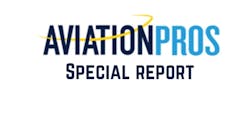Is Your Airport Prepared for a Disabled Aircraft Removal Operation?

When a flight becomes disabled on a runway, will your airport be prepared to handle the situation in a timely manner? Is there a process in place for communicating with airlines, local authorities, or nearby airports? When was the last time your team trained for this operation?
In many cases, all arriving flights are placed on hold and most likely diverted to other airports at the cost of each airline. The airport also faces a considerable loss of revenue due to flight diversion and disruption. In addition to frustrated passengers, alternative airports may face issues accommodating unexpected, diverted aircraft.
According to ACI-World Director of Safety Juan Manuel Manriquez, some of the key issues airports and airlines face when handling disabled aircraft removal is poor communication. When an airport and an airline each have their own procedures in place, problems arise when coordination and communication of a removal is not established prior to commencing flight operations.
Airports Council International-World (ACI-World) hosted a webinar on the topic of disabled aircraft removal and airport preparedness to highlight the fundamental principles for preparing for and managing a successful disabled aircraft recovery operation.
Manriquez Suggested three solutions to this issue; one airport and one airline work together to establish a plan for removal and relay information on to the rest of the airlines; one airport establishes the plan and relays information on to the airlines to follow; one airline establishes the plan of action and relays information on to the surrounding airports.
Manriquez said it’s important both the airlines and airports involved look at the situation as “This is not about me (airport) or you (airline), this is about working together.” He said airlines and airports must have an understanding on who will perform the recovery before an aircraft becomes disabled.
According to RESQTEC International Sales Manager Martijn Poen, disabled aircraft are the most common type of aviation incidents reported annually.
“Ninety-five percent of airlines and airports are not prepared,” Poen said. “Three incidents occur per week around the world and 103 incidents have occurred around in 2022 as of the end of September and the average runway closure time is 16 hours.”
Lisbon Airport Head of Fire and Rescue Services Pedro Silva said training is the key to success. The recovery plan for Lisbon includes initial training, recurrent training, and management training.
When a disabled aircraft needed to be removed from the runway at Lisbon, Silva said his team was able to reopen the runway in 1 hour 40 minutes with zero secondary damage to the aircraft.
“Even though it was a short period, we still had 23 diversions, a number of cancellations … and an ongoing effect the following day,” said Silva.
Aircraft recovery expert John Olsen said failing to plan is planning to fail.
“Establish a planning committee – include all key stakeholders, analyze your situation, obtain Aircraft Operator’s Aircraft Recovery Process documents, determine equipment requirements, determine training needs, develop an investment plan, and develop the Disabled Aircraft Recovery Plan,” said Olsen.
Olsen also said the plan should be based on the characteristics of the aircraft that may normally be expected to operate at the airport and should include:
-
The appointment of a Local Aircraft Recovery Coordinator
-
The establishment of an Airport DAR Team
-
Define team member roles and responsibilities
-
Listing of available DAR equipment
-
Listing of personnel and specialists available to assist in the recovery
-
Notification procedures for DAR team members and other agencies
-
Listing of on-airport/off-airport resources available
-
Procedures to activate special equipment kits and teams
-
Identify and determine aircraft defueling capabilities and procedures
-
Establishment of an incident command structure
-
Determine personal protective equipment requirements
-
Identify human factor needs
-
Procedures to ensure incident site security
-
Identify ways to gain technical information and support
-
Aircraft recovery release procedures
-
Coordination with aircraft operator/insurance carrier
-
Coordination with accident investigation team
-
Coordination with local authorities
Olsen left us with the following take-aways for airports to think about: Do we have a recovery plan? Is recovery equipment and tooling available? Are personnel trained to perform recovery? After an incident, how long will your runway stay closed? How much revenue will be lost as a result of delayed recovery?
“The removal of disabled aircraft is a shared responsibility; aerodrome operator, aircraft operator, investigative authority, insurance underwriter,” said Olsen.
About the Author
Christina Marsh
Editor
Christina Marsh (Basken) is a passionate aviation enthusiast and sport pilot with industry knowledge and experience in writing and editing for digital and print publications as well as creative content in photography, videography, and podcasting.
Christina graduated from the University of Wisconsin-Oshkosh with a bachelor’s degree in journalism with a visual emphasis.
